Jeremy Burnett’s RoofLynx company has tackled enormous commercial roofing projects and multi-million-dollar renovations.
But being tasked with replacing every inch of glass atop one of the country’s most iconic roofs?
“My initial thought was this a serial number 1 of 1,” says Jeremy, the owner of the Charlestown, Indiana-based company. “From a complexity, aesthetics, artistic standpoint, nothing really comes close to it.”
Today marks the 2-year anniversary of the severe hailstorm that ultimately created another comeback legacy in the long history of West Baden Springs Hotel. Those dents, cracks and dings from the June 25, 2023 storm are now long gone thanks to Jeremy’s RoofLynx team, and we caught up with him as well as French Lick Resort CEO Chuck Franz about the historic and tedious process of replacing West Baden’s famous dome skylights, which are shining bright once again.
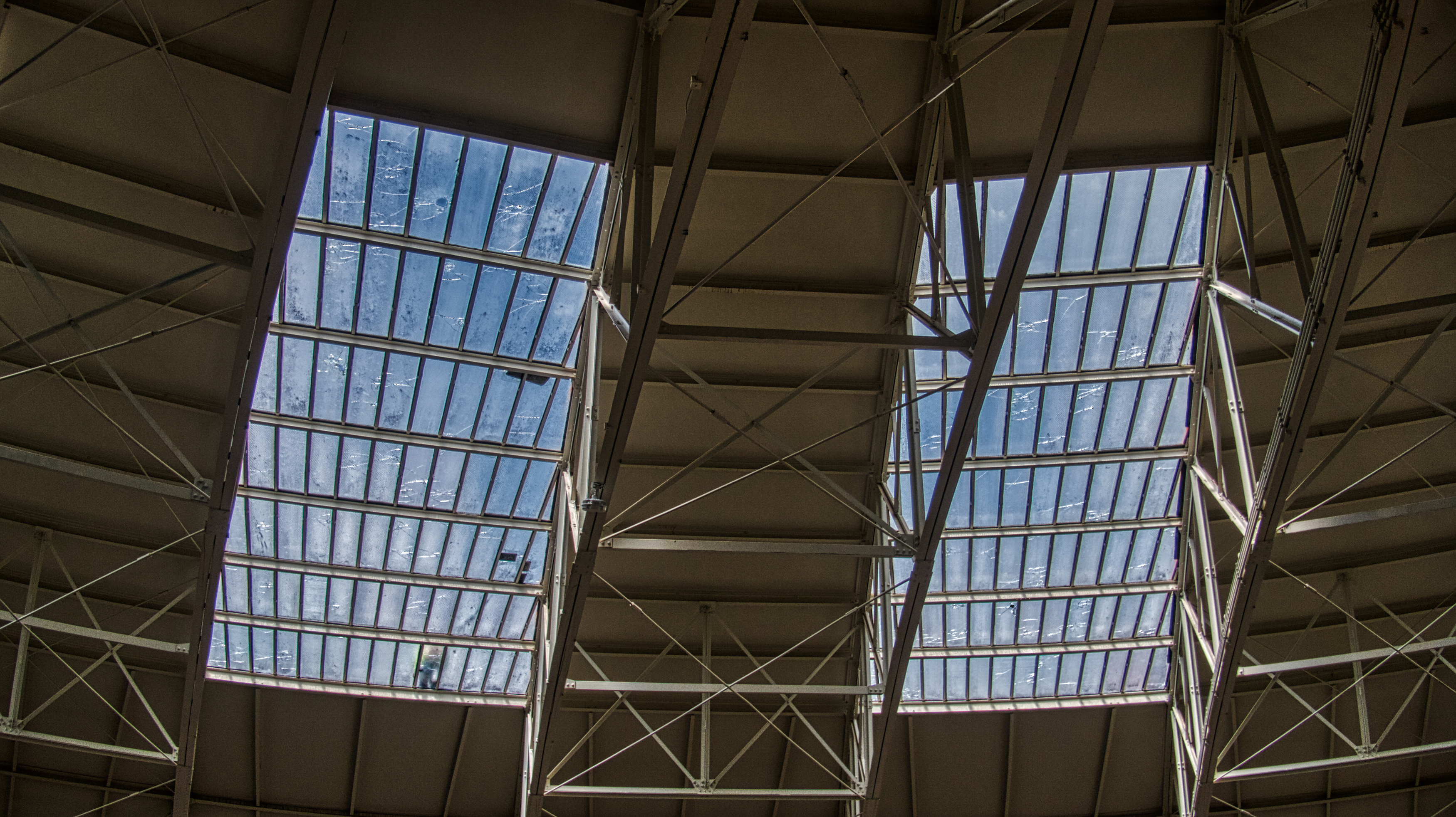
First impressions of showing up at West Baden Springs Hotel that night and seeing the damage?
Jeremy Burnett: “When I got there, there were about 20 people waiting for me at the hotel entrance. The first thought was what are we putting over this now to try and prevent any more water from getting in the building? What’s the immediate answer for repairing the glass on a temporary basis? My comment to the guys that were what are we going to do … I looked at them and I said, ‘I have no idea. I can be back with 10 guys in the morning, and I will have a plan by 5:00 in the morning.' The next day we shifted and pulled people off projects, got the people there that we needed.”
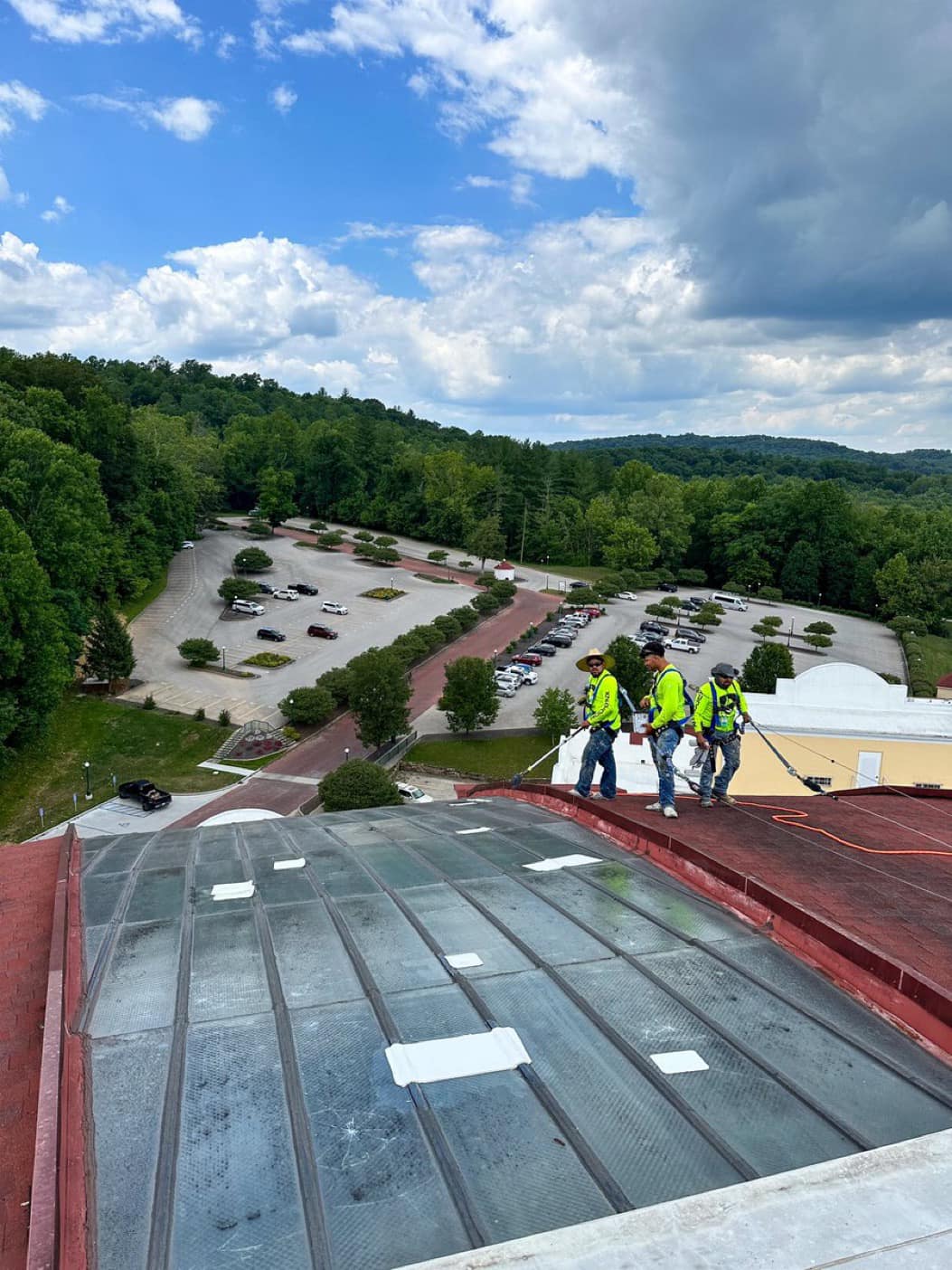
“The solution we came up with is basically a heavy duty tape product that we use in commercial roofing. We were using that tape and making Band-aids over top of the hail impact. We could stand on the roof in a harness and we’d reach out with a pole and just slap it on there and then use a roller to seed it in place. That was our initial repair, and in addition to that we ended up rolling clear silicon over the entire skylight, and that helped with hairline cracks and fractures to seal those in. It was mostly on the exterior, but where there were heavy impacts or the hail had actually gone through the glass, there were dangling pieces on the inside. Where the worst of it was, we went on the inside of the glass and put the same tape on the inside so nothing would fall.”
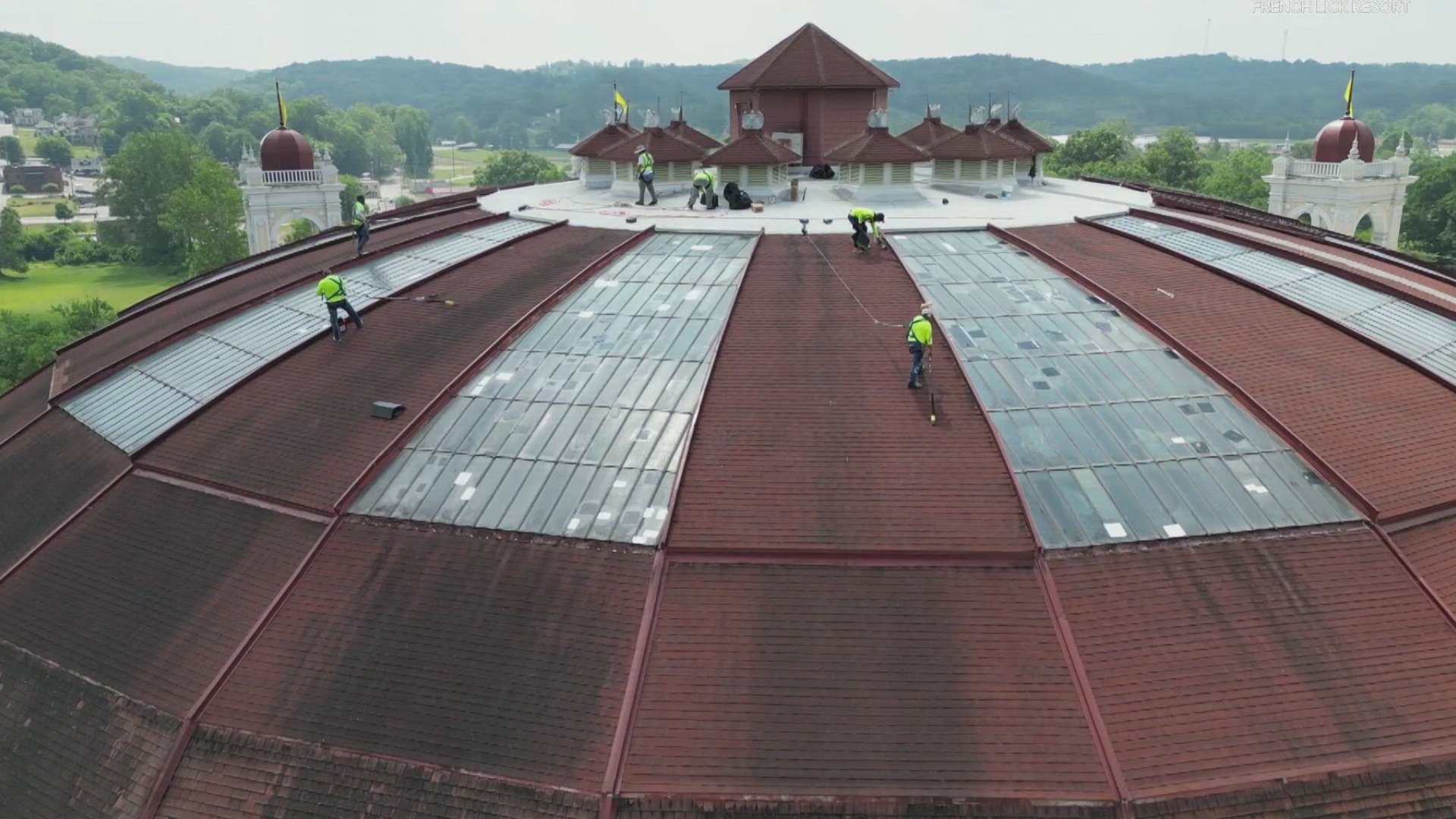
After seeing the extent of the hail damage, what was the initial thought about how long it’d take to repair?
Chuck Franz: “Really, I had no clue on how long. I immediately started thinking how are we temporarily going to get the atrium open? I knew the hotel was OK, all the rooms were OK, but how are we going to safely reopen the atrium so there’s no water, no glass, no anything coming down? The wheels started spinning right away, knowing the repairs were going to take forever. (Another issue), you didn’t want guests looking up at people working in that area. You needed to have it blacked out.”
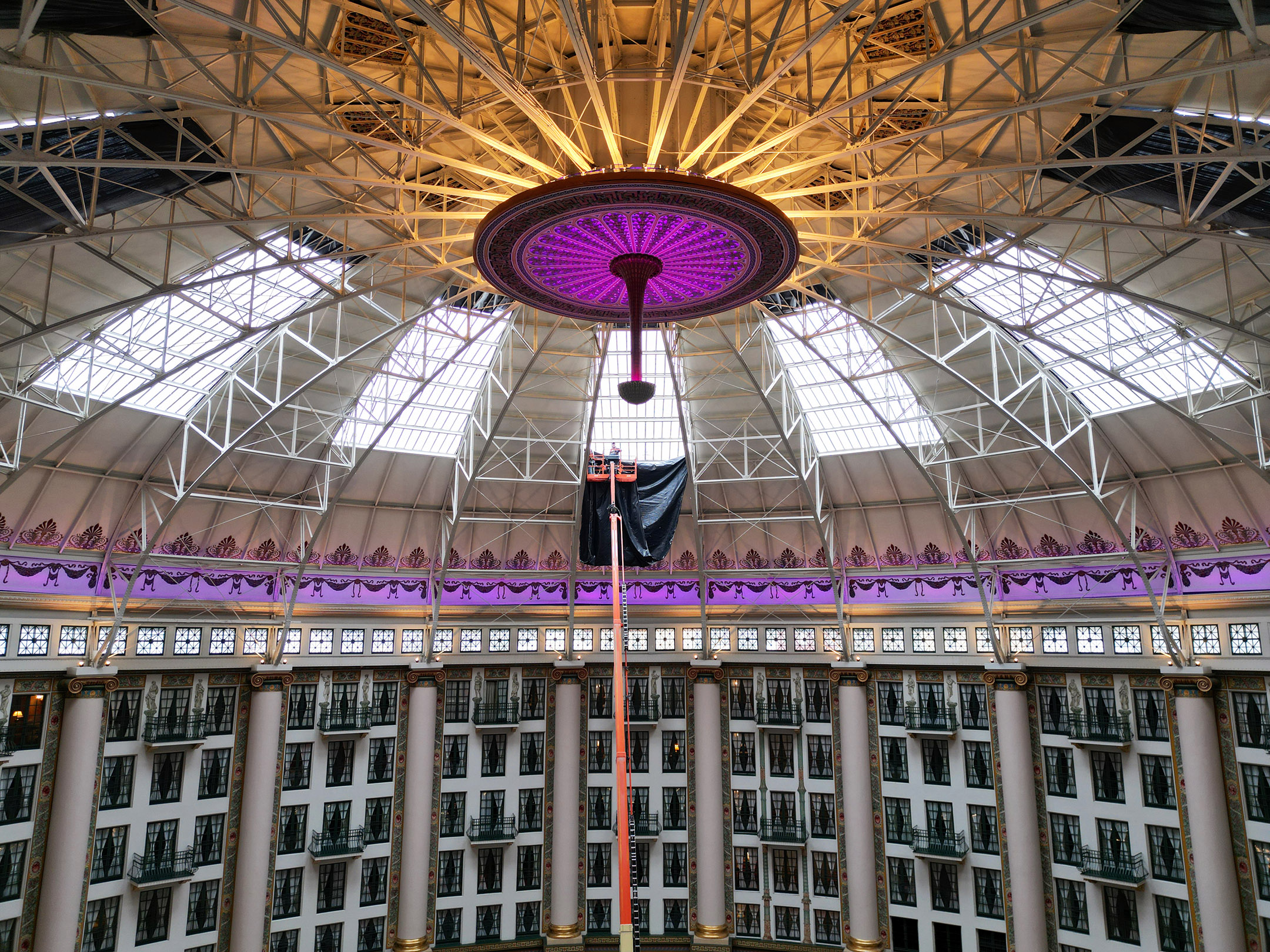
So, that led to our French Lick Resort team creating those black tarps on the under side of the dome, which were both protective and cosmetic.
Chuck Franz: “The conversations the next morning, we started talking and thinking about what materials they could use for the tarps, and went to work on those. I remember them creating the first one and laying it out on the floor in the Exhibition Hall. The question was, could they get up there and could they secure it? By Friday (five days after the storm), we had one up there. It worked, so we went to work on tarps to cover all 12 of the glass panels — it was like an assembly line in the Exhibition Hall. That was the big deal, figuring out a way to protect the atrium and reopen it.”
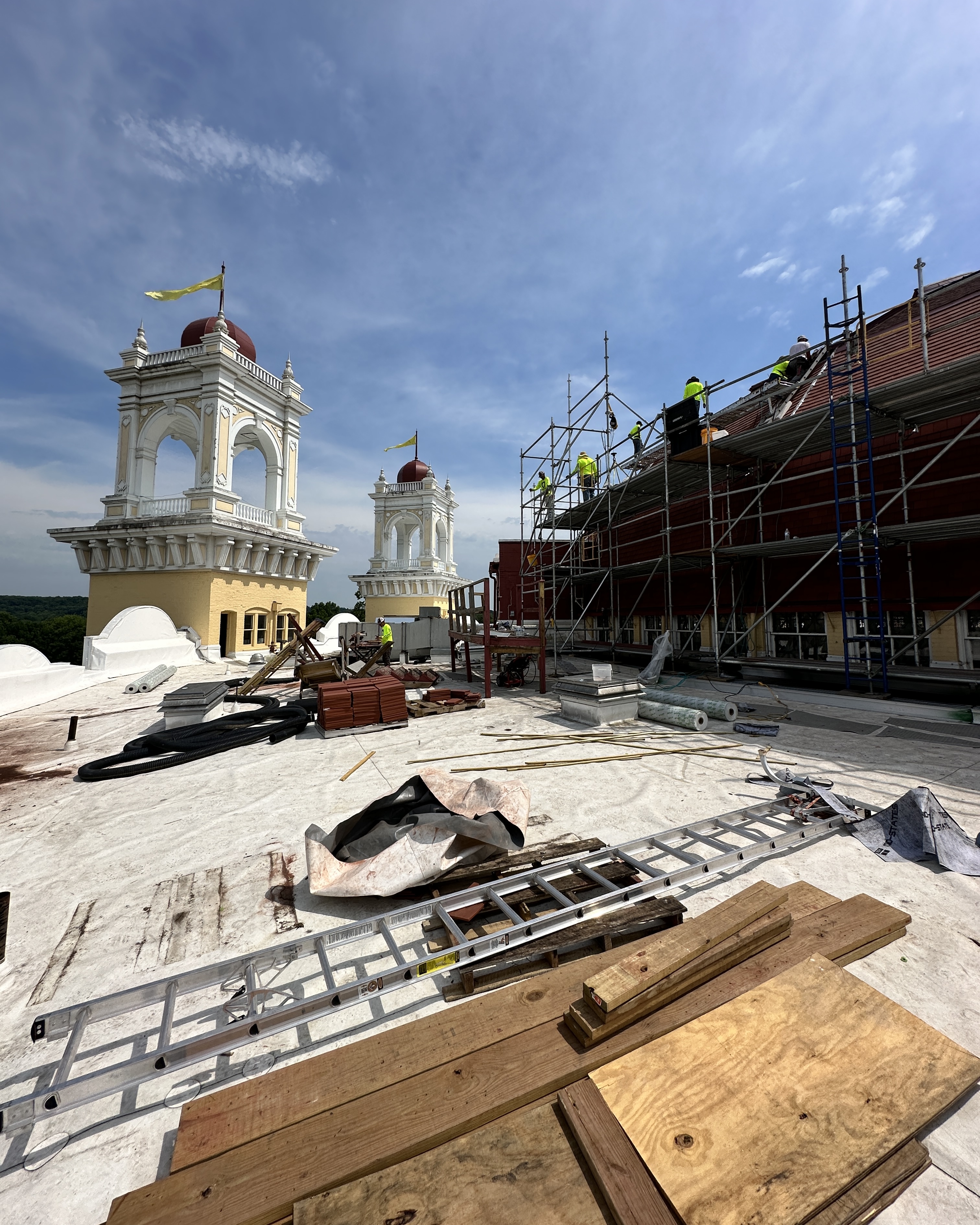
After the “Band-aid” phase, what was the process of strategizing a solution to replace the dome glass?
Jeremy Burnett: “For this project, any conventional wisdom we normally apply does not apply. We knew that whatever solution we came up with, it’s very visible. People come there to look at the place, which is very different from most commercial roofing projects. You go in the grocery store, you’re not looking at the roof. You go to West Baden, people are standing around taking pictures of the roof.”
“My brain started going to, what mitigates that risk moving forward for the resort? That started leading us to certain glass products and basically there were two types we considered. There was a laminated glass, and the Lexan which we ended up installing. To get to that point, just a lot of thinking and talking with George (Ridgway), the architect, and bouncing ideas off each other. Walking with the insurance guys because they go from claim to claim – ‘Hey, I was just at a water park in Oklahoma, here’s what they had.’ That type of thing. That’s what led us down the road to a solution.”
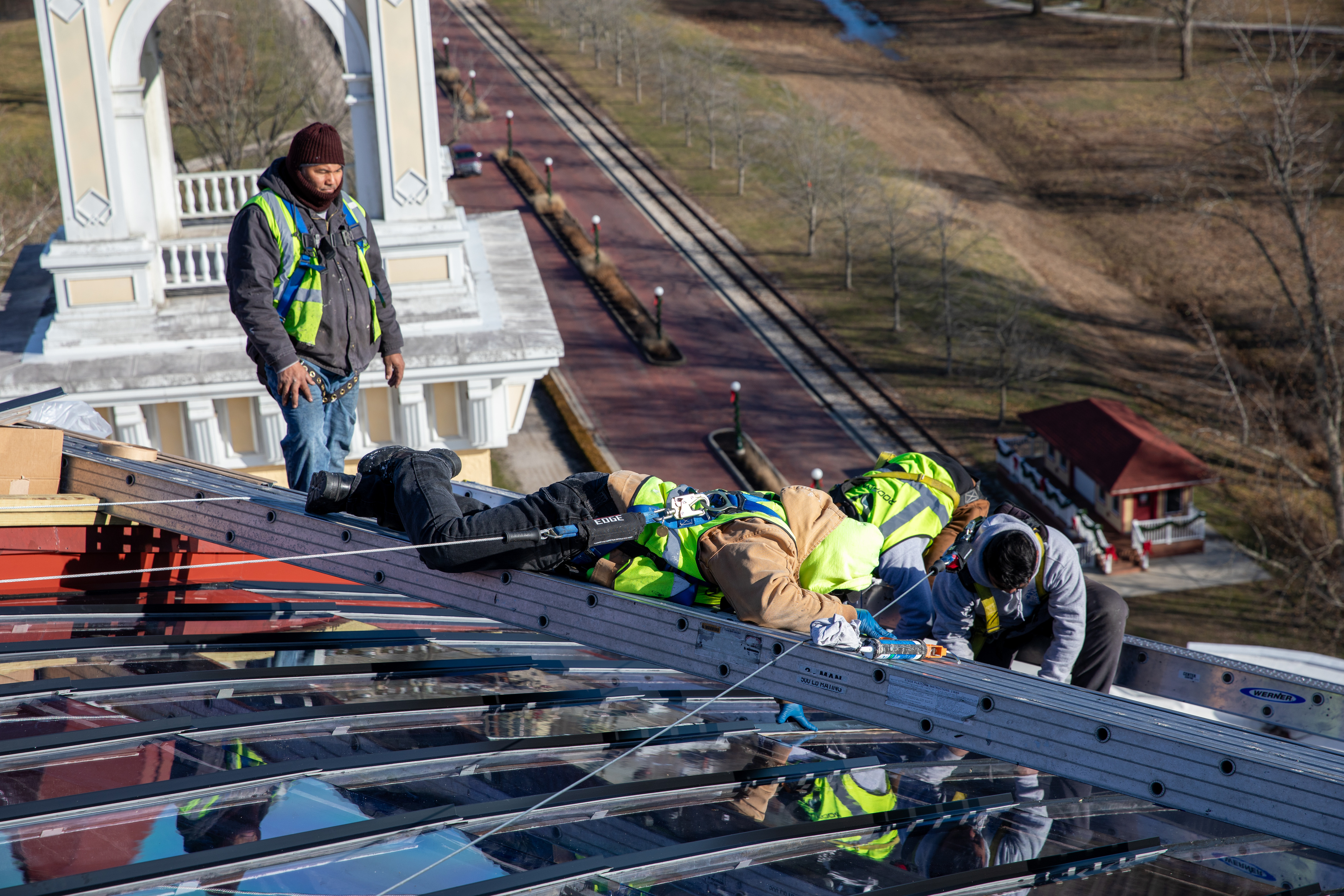
What were the top challenges you faced?
Jeremy Burnett: “Height and access. Right off the bat when we started evaluating the options for glass, you look at things like, 'OK, if we use this kind of glass, we have to take out what’s there, measure the frame, be on the ground and cut something, get it back up 75 feet off the ground, walk it back up the dome.' That’s very laborsome. That was one of the big challenges: what works with the unique structure of the building.”
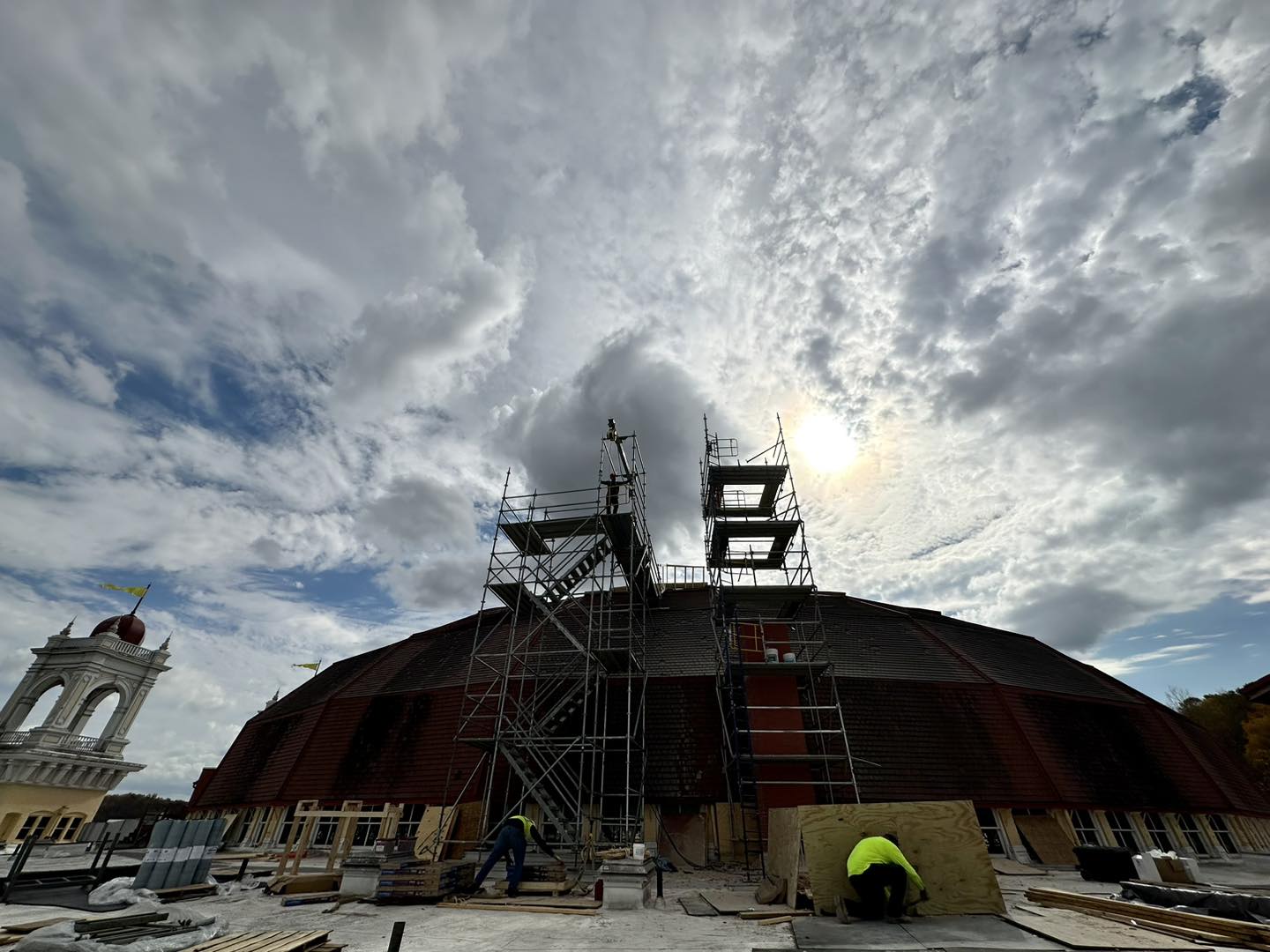
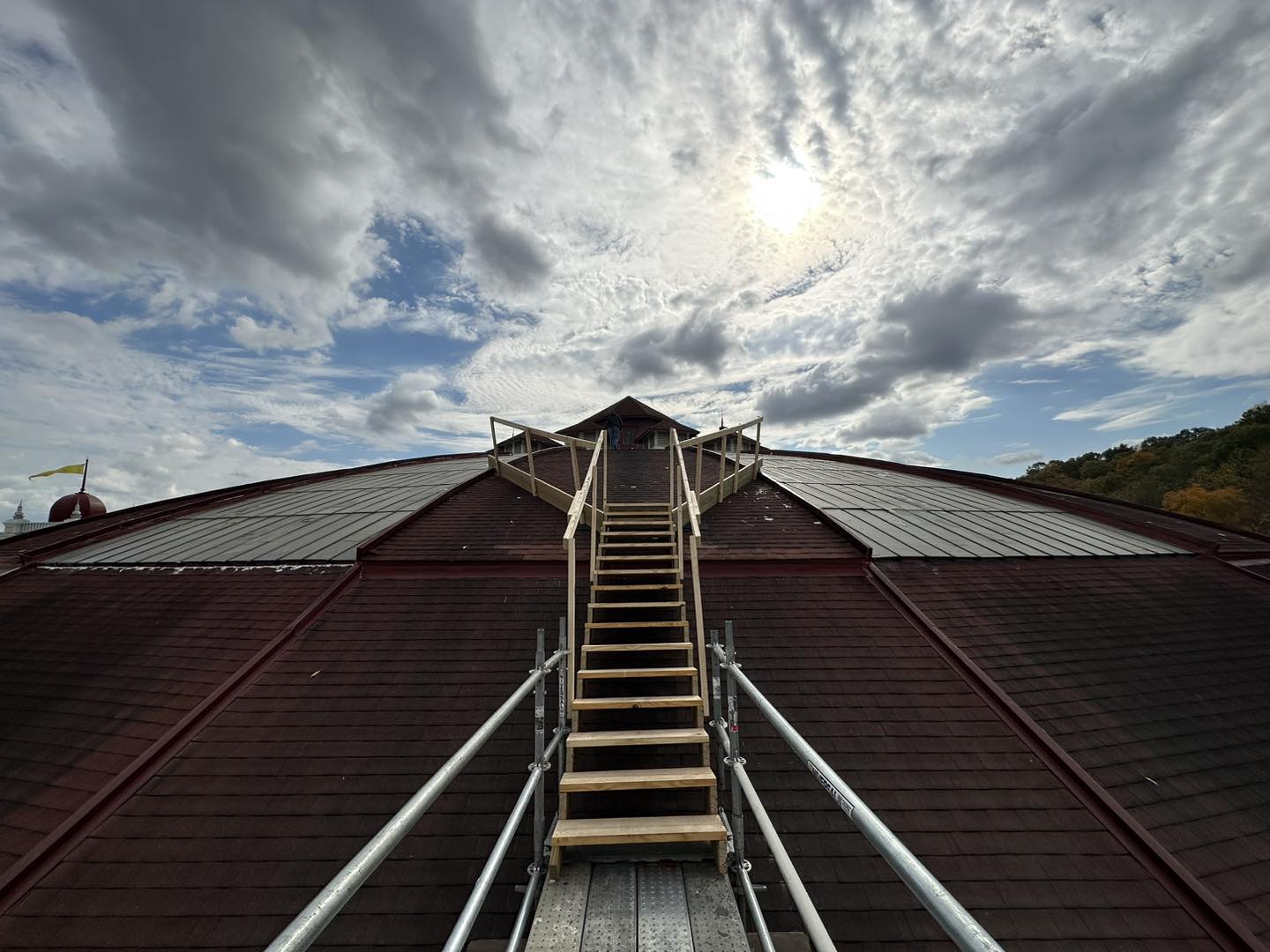
“And then access. Each of the (skylights) are 20 feet at the base, 10 feet at the top – how do we get to the middle pane to work on it? We fabricated custom platforms to access a lot of it. We had safety systems for double-tying off the rails that we were on. We had to buy additional safety equipment and just figure out how to do it safely. The logistics part of how you deal with moving 12,000 square feet of custom-cut panel with that configuration of a building was another factor that went into the Lexan decision because it comes in sheets like plywood and we could cut it and handle it easier than glass.”
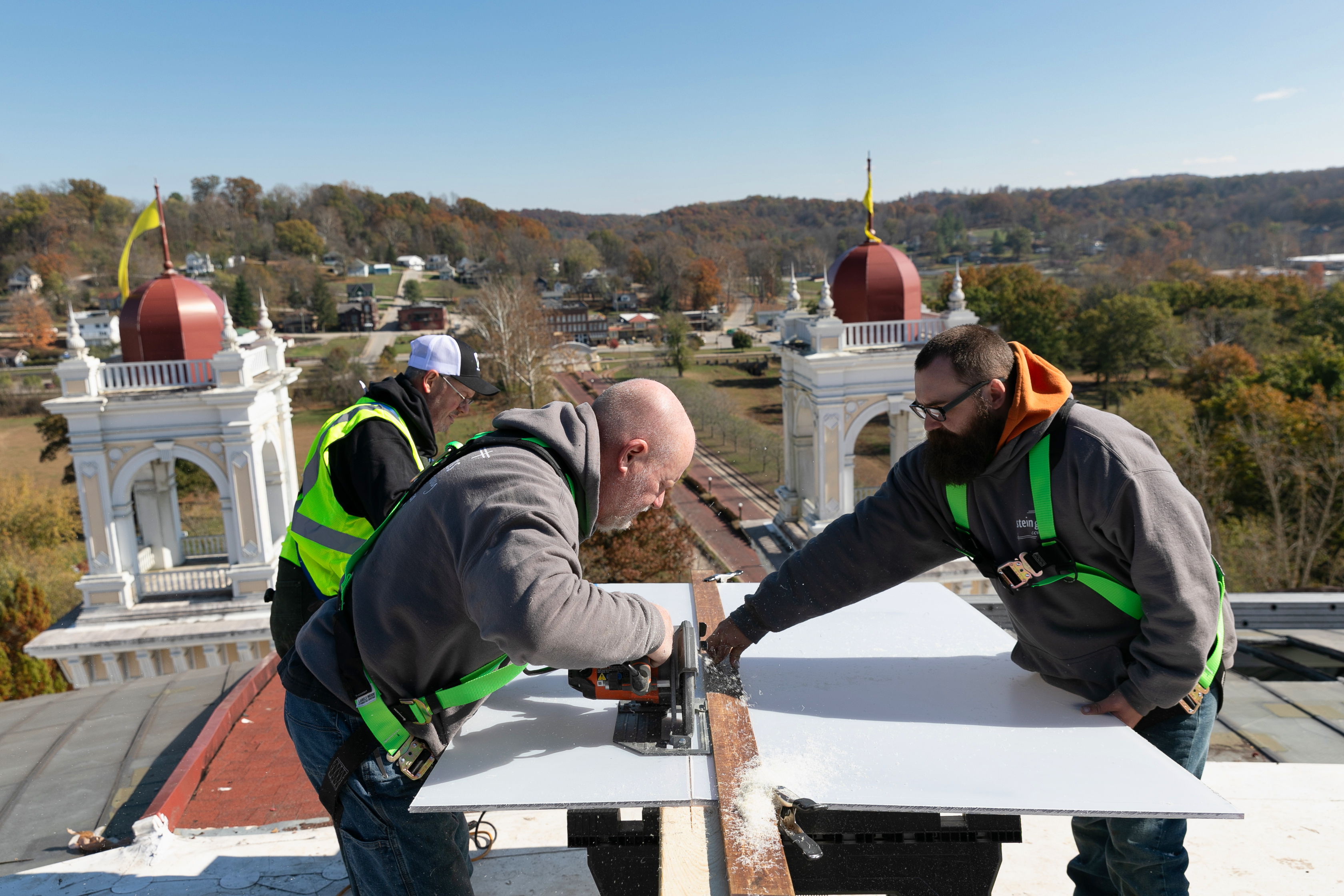
Chuck Franz: “While the hotel was open during repairs, we had to occasionally close sections or quadrants of the atrium if work was being done on certain parts of the dome. We had to determine how are the workers going to matriculate around the dome; where are you going to put guests versus where you’re not going to put guests while you’re making repairs, so they can work as fast as they can. It’s a coordination with the contractors through weather and everything else. If you had a rainstorm, you’d be chasing the leaks because your roof had new work, old work, no work yet. It wasn’t just workers showing up every day; everything had to be carefully thought out.”
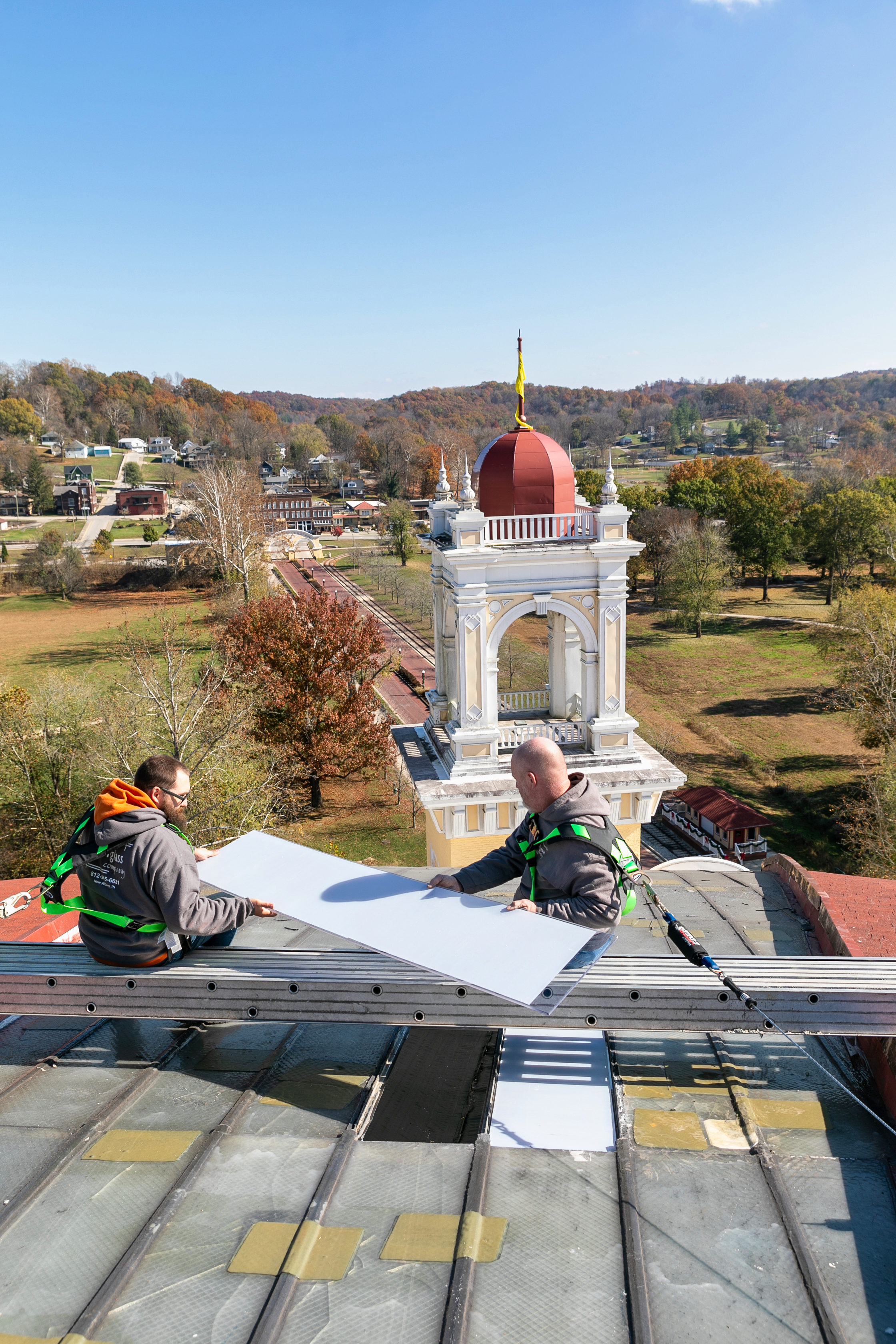
And then there’s 77 individual panes of glass on each of the skylights … 924 in all to remove, fabricate and replace.
Jeremy Burnett: “It took a certain skill set to make that work, and we found that with one of our guys, Craig Thibodeaux. He’s the one that led the team that installed all the clay tile and all the skylights. He’s the guy who touched all the parts and made all the cuts and made it pretty. For Craig, it was half art, half work. He takes a ton of pride in what his product is. He was the guy that I knew could go there and it is going to look good at the end. He figured it out, and the guys put it together.”
“There were other contractors involved like when we took off the tiles, we hired somebody to just take them off, but we did all the installations on everything. Pretty much everybody in the company (50 people) ended up working there. We would average about 20 people on site daily.”
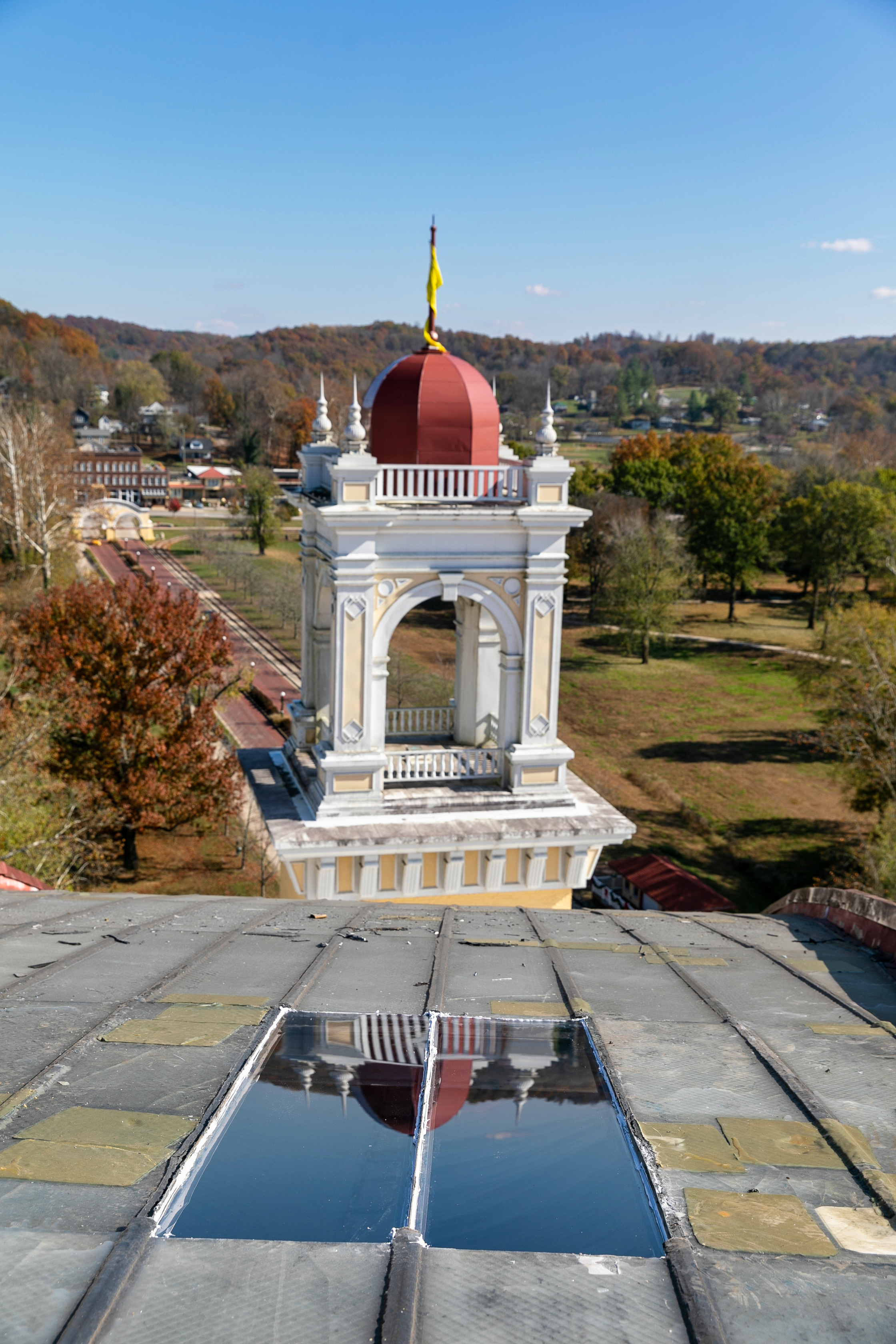
Seeing the new Lexan material alongside the original glass from the 1902 construction is striking. The Lexan is crystal clear, and the old glass looked far more opaque. Did you anticipate the atrium having a different brightness level?
Chuck Franz: “We just wanted the strongest material we could have. That original glass had lasted 120 years and Carl (Cook) wanted it to last longer than that, since we had the chance to replace it. We always knew if it was too bright or too different that we could go back and tint the glass, just like you do in cars. It was full speed ahead, let’s get it in place; we’ll deal with that if it’s too bright. It looks great in the atrium and we haven’t had to worry about that.”
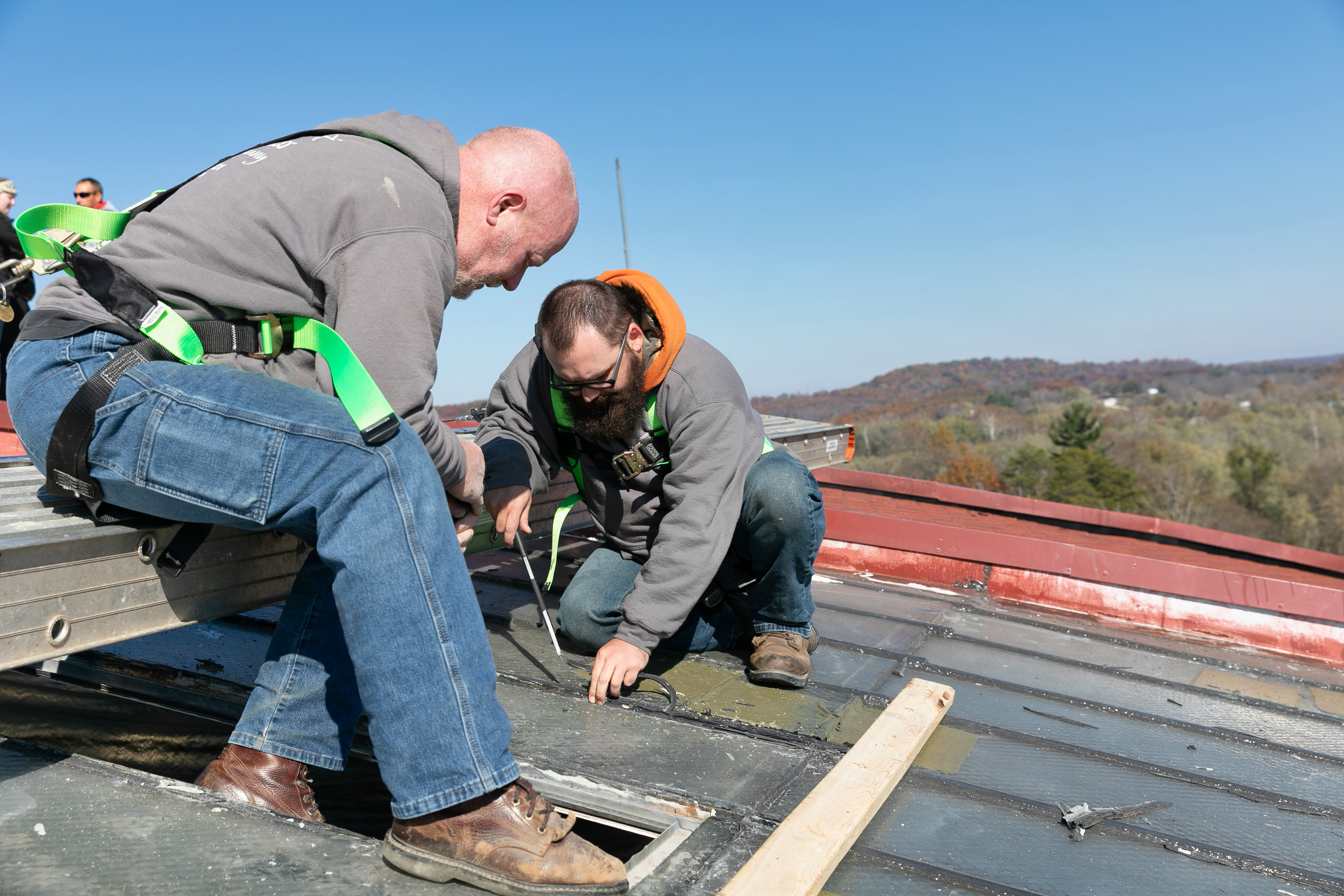
The dome obviously got the most attention, but how far were repairs needed resort-wide?
Chuck Franz: “The sheer enormity of 58 roofs: every building at the resort has a repair. Everything was damaged in some way. Pete Dye Mansion, Hagen’s Club House Restaurant. Every roof you had. Even that little bitty bellstand outside the hotel. You had to evaluate them all, put them all out for bid and get it all scheduled.”
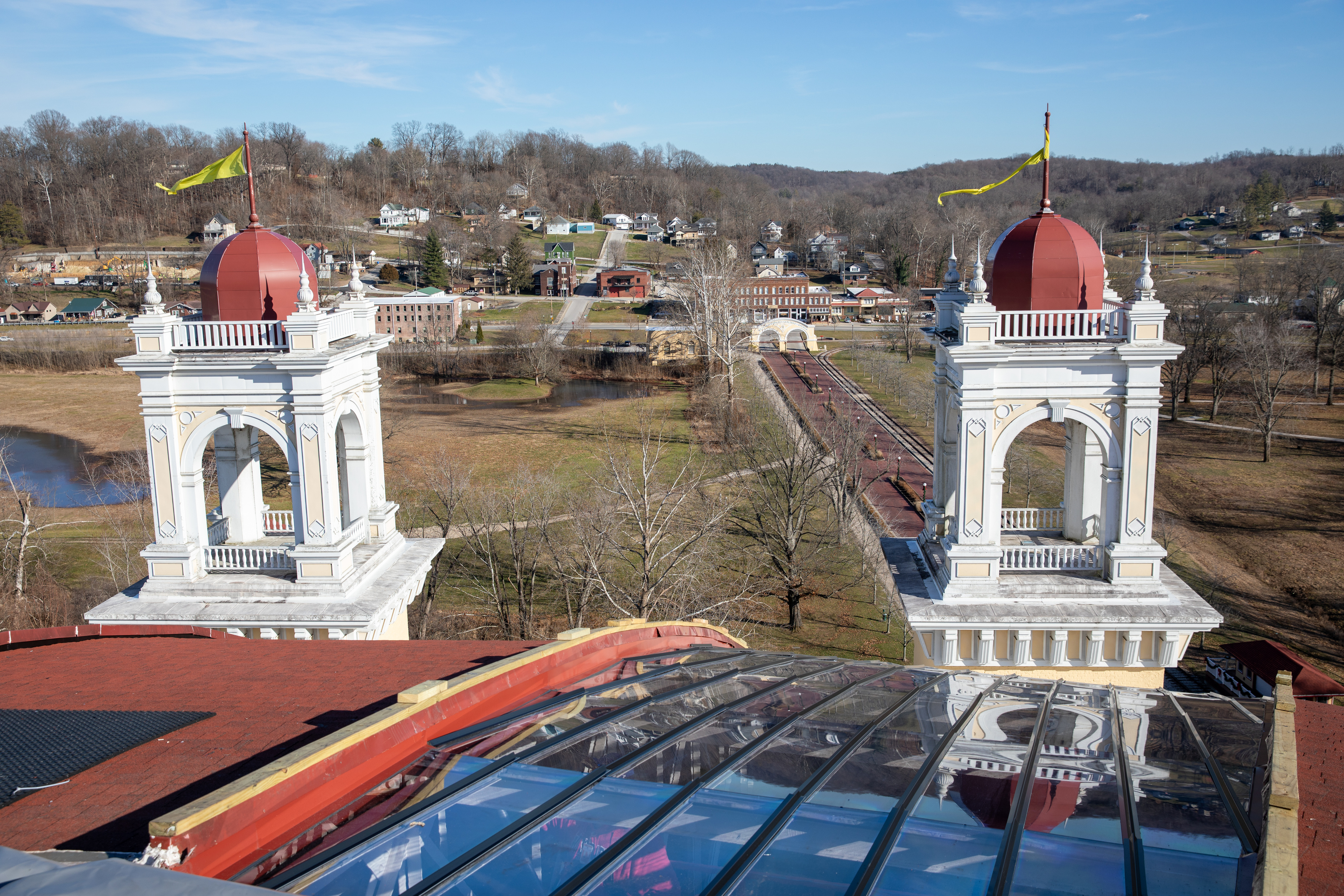
While being up on the roof, what else did you see that gave you an appreciation of how the hotel was constructed 123 years ago?
Jeremy Burnett: “One thing that stuck out to me, when we got up there and started looking at the damage on the inside of the dome, every beam on the top of it says Carnegie on it. Very historic name. You just think, ‘Wow, Carnegie.’ You know about the history of the hotel, but that’s a moment where you see it with your own eyes.”
Chuck Franz: “What struck me: other than the glass and some dents, the structure was as solid as anything. It stands the test of time. Certainly shingles and clay tiles are going to bust, but those are replaceable things. The structure, the steel and everything repair crews were going to have to climb on — perfect. And it’s still that way. I’ve had folks comment just what an engineering marvel it still is, all these years later.”